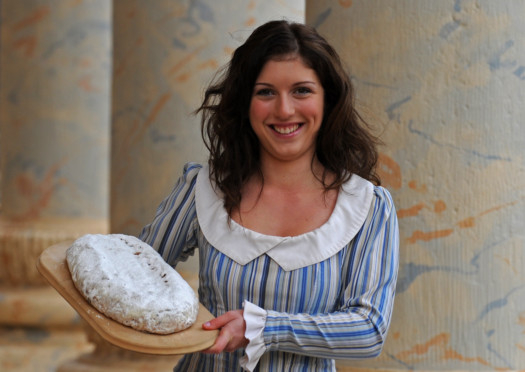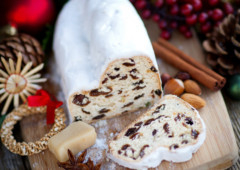
While childhood memories flood in during the holidays of all the decadent foods associated with the festive period, it’s interesting how almost three years of marriage to a German national has set the stage for new food traditions.
I’m talking about my love affair with stollen — a German Christmas bread or cake.
I only fully discovered it this time last year when my husband brought home an advent wreath with four candles and stollen from the local supermarket, in keeping with his tradition of lighting a candle every Sunday (starting four weeks before Christmas) in the afternoon and inviting people over for a slice or two of stollen and coffee.
With a sugary, crumbly crust betraying a moist centre filled with candied fruit, marzipan ribbons, slivered almonds and fragrant spices such as cinnamon, cardamom, nutmeg and vanilla, this humble fruit cake deserves a lot more attention and prominence on festive tables.
A slice of tradition
Speaking to some German friends about baking stollen, all admitted to the process being tedious, long and fraught with pitfalls. Ines Brandmeier, a long-time Dubai resident, confesses that her only attempt to recreate this at home resulted in “an uneven texture, somewhere between stale pumpernickel bread and a chunk of granite.”
Hoping that this was simply a baking anomaly, I was tempted to take up the challenge of preparing my own stollen. Nearing the end of the process, I realised that the trick is to strike the right balance between bread and fruit, as well as not suffocating the entire mixture with copious amounts of butter. Also, in order to avoid leadenness and a dense cake, let the dough rise once or twice (the more the better) before adding the fruit, currants and nuts and letting the entire mixture swell up again. Be warned though — it is not the most compliant dough and I got it right after two attempts. Lastly, for that cakey solid shell, brush the loaf with melted butter once out of the oven and sprinkle a lot of granulated sugar on top and on the sides. Once completely cool, add a second sprinkling and voila! You’ve got a buttery, moist cake filled with fruits and nuts waiting to be devoured.
History revisited
Stollen was first created in Dresden in east Germany around 1470. Its form as a brick or rounded loaf with a white coating of sugar was meant to represent Jesus Christ as a child in swaddling clothes. According to historical accounts, Saxony’s most renowned emperor, Augustus II the Strong, loved earthly pleasures, including women, art and outlandish displays of wealth. In 1730, the latter led him to stage a culinary event for more than 24,000 guests, which culminated with the serving of a giant stollen, weighing about 1.8 tonnes and that was pulled by eight horses around the city. Roughly 100 bakers were required to bake the stollen.
Today, the annual Dresden Stollen Festival is a highlight in the city’s festival calendar. Jan Skubincan of Swissôtel Dresden Am Schloss says, “Only premium and pure products are used and it must meet the stringent requirements as laid out by the Stollenschutzverband (Trade Protection Society Dresden Stollen).”
Last year, the chefs at Kempinski Hotel baked the largest stollen in the UAE at 570 metres. Food suppliers say that upwards of 1,500 stollen are delivered per hotel during the winter season. “It’s one of our bestsellers, alongside panettone and yule logs,” says Ajay Joseph, Assistant Sales Manager, Chef Gourmet, Dubai.








